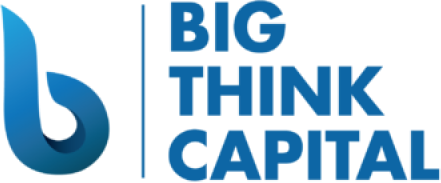Mitigating Inflation Impact on Small Businesses: Strategies for Efficient Working Capital Management in 2025
Estimated reading time: 7 minutes
- Understand inflation’s impact on your costs and profitability.
- Implement effective inventory management to reduce holding costs.
- Streamline operational expenses to preserve cash flow.
- Leverage financing options to support working capital.
- Regularly assess financial health and diversify revenue streams.
Table of Contents
Understanding the Current Inflation Landscape
According to the U.S. Bureau of Labor Statistics, inflation rates remained elevated, averaging around 4.5% in the first quarter of 2025 compared to previous years. This increase affects the costs of goods and services, leading to tighter margins for many small businesses. With essentials like materials, labor costs, and rent climbing higher, business owners must be strategic in managing their working capital to maintain profitability.
Key Drivers of Inflation in 2025
Understanding the factors contributing to inflation can help business owners devise strategies to combat its effects effectively.
- Supply Chain Disruptions: Ongoing global supply chain issues persist, resulting in supply shortages and increased costs for raw materials.
- Labor Market Tightness: A competitive labor market has caused wage inflation, pushing businesses to invest more in their workforce.
- Consumer Demand: Despite inflation, consumer demand continues to rebound, adding pressure on businesses to keep pace with rising expectations.
Knowing these dynamics enables business leaders to tailor their response to their specific context, thereby managing working capital more effectively.
Strategies for Efficient Working Capital Management
While inflation presents challenges, strategic working capital management can mitigate impacts and position your business for success. Here are practical strategies every small business owner should consider:
Optimize Inventory Management
Effective inventory management is essential for controlling costs and minimizing wastage. Businesses can adopt strategies like:
- Just-in-Time (JIT) Inventory: Align the acquisition of inventory with production schedules to reduce holding costs and increase cash flow.
- Regular Audit of Stock Levels: Schedule frequent inventory checks to identify slow-moving items that could tie up capital unnecessarily.
- Utilize Technology: Implement inventory management software that provides real-time data, helping you make informed purchasing decisions.
By optimizing inventory, you free up capital and help alleviate some pressures caused by inflation.
Streamline Operational Expenses
Reviewing and optimizing operational expenses ensures that your small business remains lean. Here are ways to streamline costs:
- Negotiate with Suppliers: Open a dialogue with suppliers to discuss pricing, payment terms, and bulk purchasing options. Establishing lasting relationships can lead to better deals.
- Energy Efficiency Initiatives: Invest in energy-efficient systems and practices to lower utility expenses long-term.
- Outsource Non-Core Functions: Consider outsourcing functions such as accounting or IT support, where feasible, to manage labor costs effectively.
By staying vigilant about operational expenditures, you can preserve cash flow crucial for meeting growing expenses due to inflation.
Improve Cash Flow Forecasting
Effective cash flow management allows business owners to anticipate future financial positions and make informed funding decisions:
- Develop a Cash Flow Projection Model: Use historical data to forecast future cash inflows and outflows based on expected revenues and expenses.
- Monitor Key Performance Indicators (KPIs): Track metrics such as accounts receivable turnover and days sales outstanding to gauge the efficiency of your cash flow.
- Maintain a Cash Reserve: Establish an emergency fund to cover unexpected expenses or lean months caused by economic fluctuations.
A robust cash flow management strategy allows you to anticipate challenges and act quickly to mitigate the impact of inflation.
Leverage Financing Options
When managing working capital in an inflationary climate, having access to the right financing solutions can provide a substantial advantage. Big Think Capital offers a variety of funding products designed to support small businesses through difficult times.
- Working Capital Advances: Quick access to capital can help manage cash flow pressures. These advances offer flexible repayment options that can accommodate your unique business cash flow cycle.
- SBA Loans: For more significant investment needs or expansion plans, SBA loans often offer favorable terms with lower interest rates, allowing you to maintain your purchasing power amid rising costs.
- Equipment Financing: If your business relies on specific machinery or technology, consider equipment financing to acquire necessary tools without straining cash flow.
By leveraging the right financial products, your business can secure the working capital needed to navigate inflationary pressures effectively.
Practical Takeaways for Business Owners
As small business owners contend with ongoing inflation challenges, implementing the following practical insights will prove invaluable:
- Regularly Assess Financial Health: Consistent evaluation of financial statements will help you spot emerging trends and act before issues escalate.
- Diversify Revenue Streams: Explore opportunities for additional revenue channels, whether by expanding service lines or entering new markets.
- Prioritize Vendor Relationships: Foster strong partnerships with suppliers to negotiate favorable terms, securing better pricing as inflation continues to impact costs.
Conclusion
Inflation presents a formidable challenge for small businesses in 2025, but by employing targeted strategies for working capital management, business owners can stave off potential repercussions and enable growth. Optimizing inventory, streamlining operational expenses, improving cash flow forecasting, and leveraging appropriate financing options are all vital components for sustaining business health amidst an inflationary environment.
At Big Think Capital, we understand the unique funding needs of small businesses and are committed to helping you find the right solutions to improve your financial position. For personalized advice, learn more at our website or speak with one of our funding experts today. Together, we can navigate the challenges of inflation and set your business on a path to success.
FAQ
Q1: What are the best strategies for managing inflation as a small business owner?
A1: Effective strategies include optimizing inventory management, streamlining operational expenses, improving cash flow forecasting, and leveraging financing options.
Q2: How can financing options help mitigate inflation issues?
A2: Having access to working capital advances, SBA loans, and equipment financing can provide necessary liquidity to navigate rising costs and maintain operational efficiency.
Q3: Why is it important to assess financial health regularly?
A3: Regular assessment helps spot emerging trends, enabling proactive adjustments to strategies before potential financial issues escalate.






